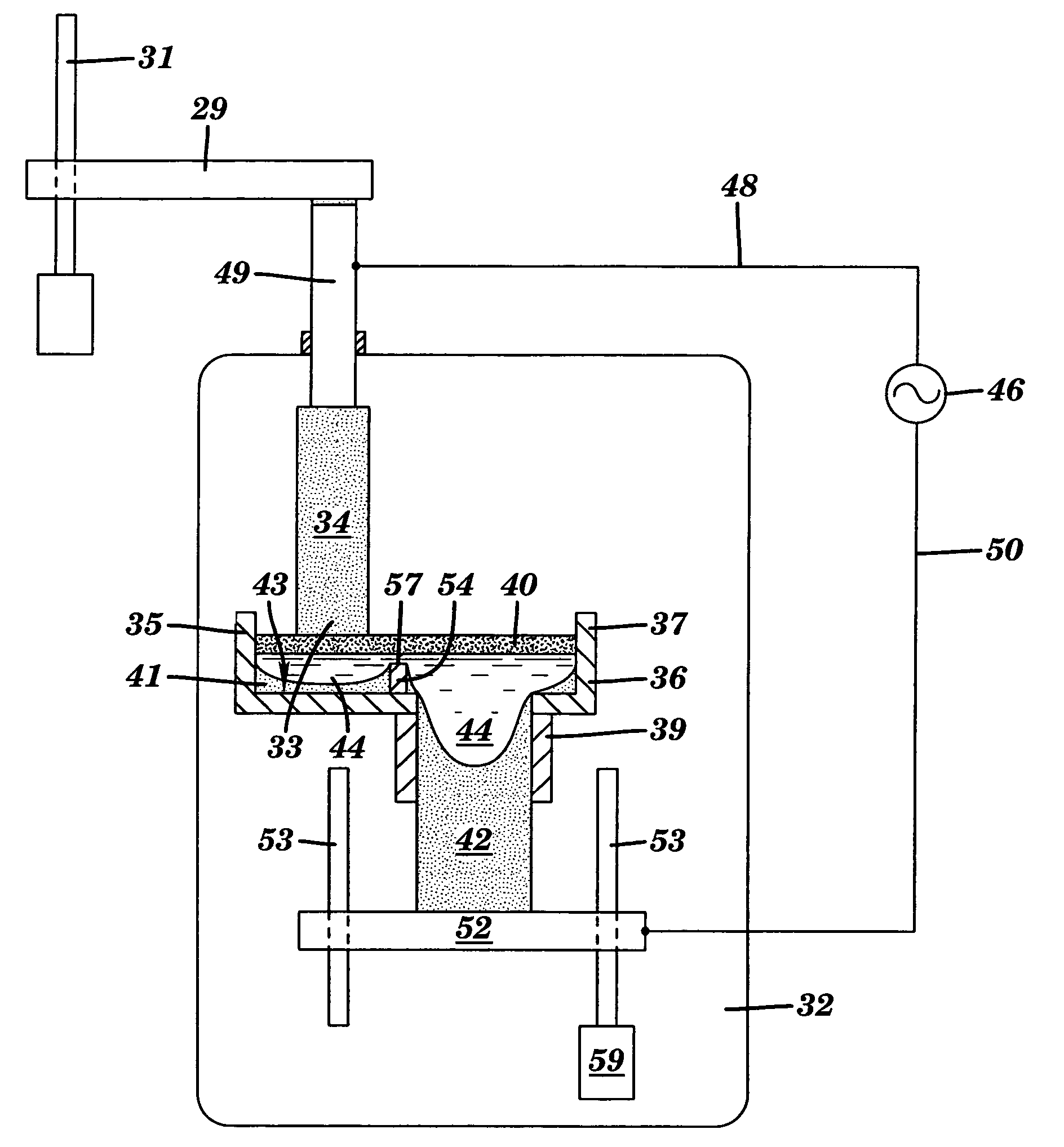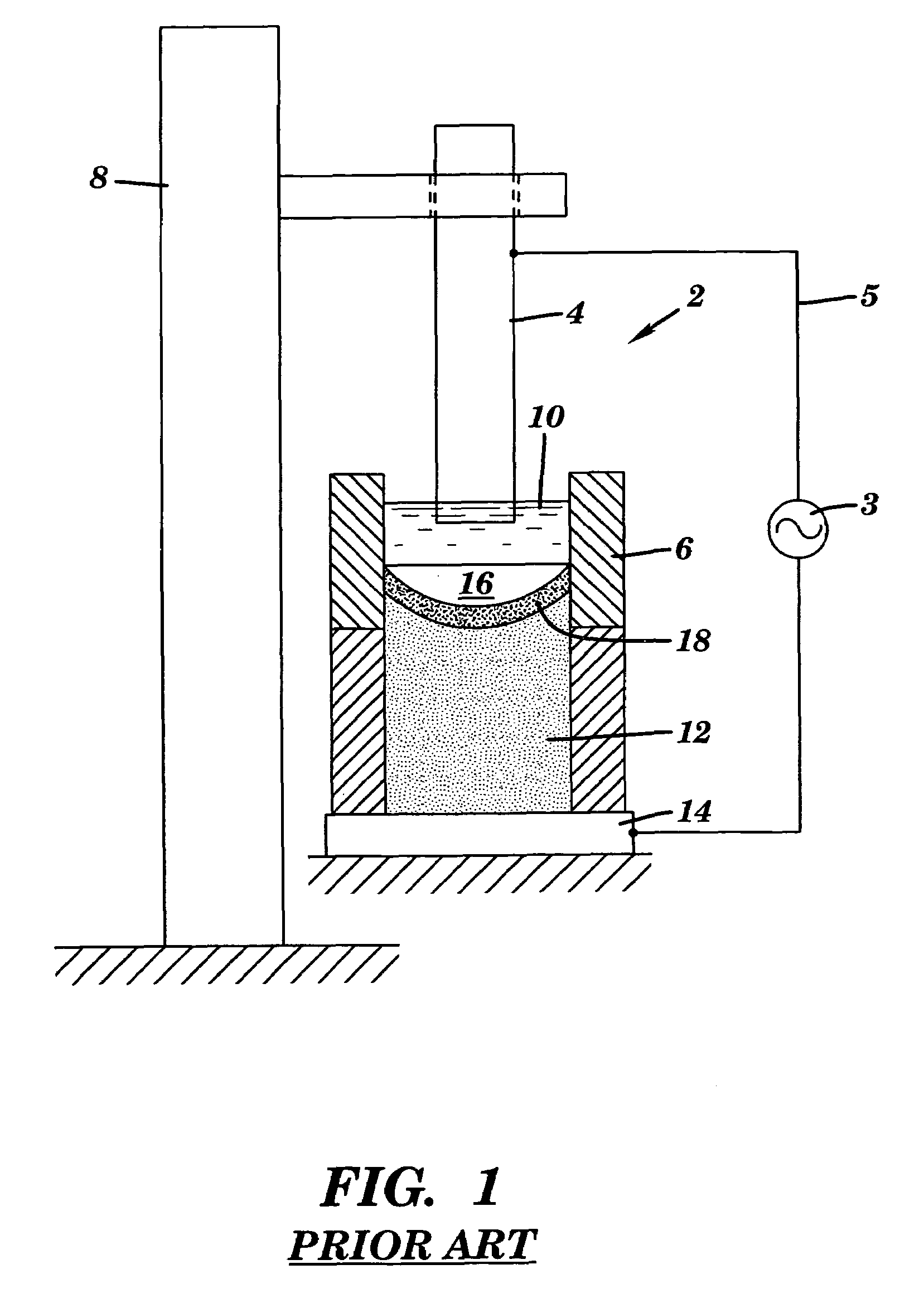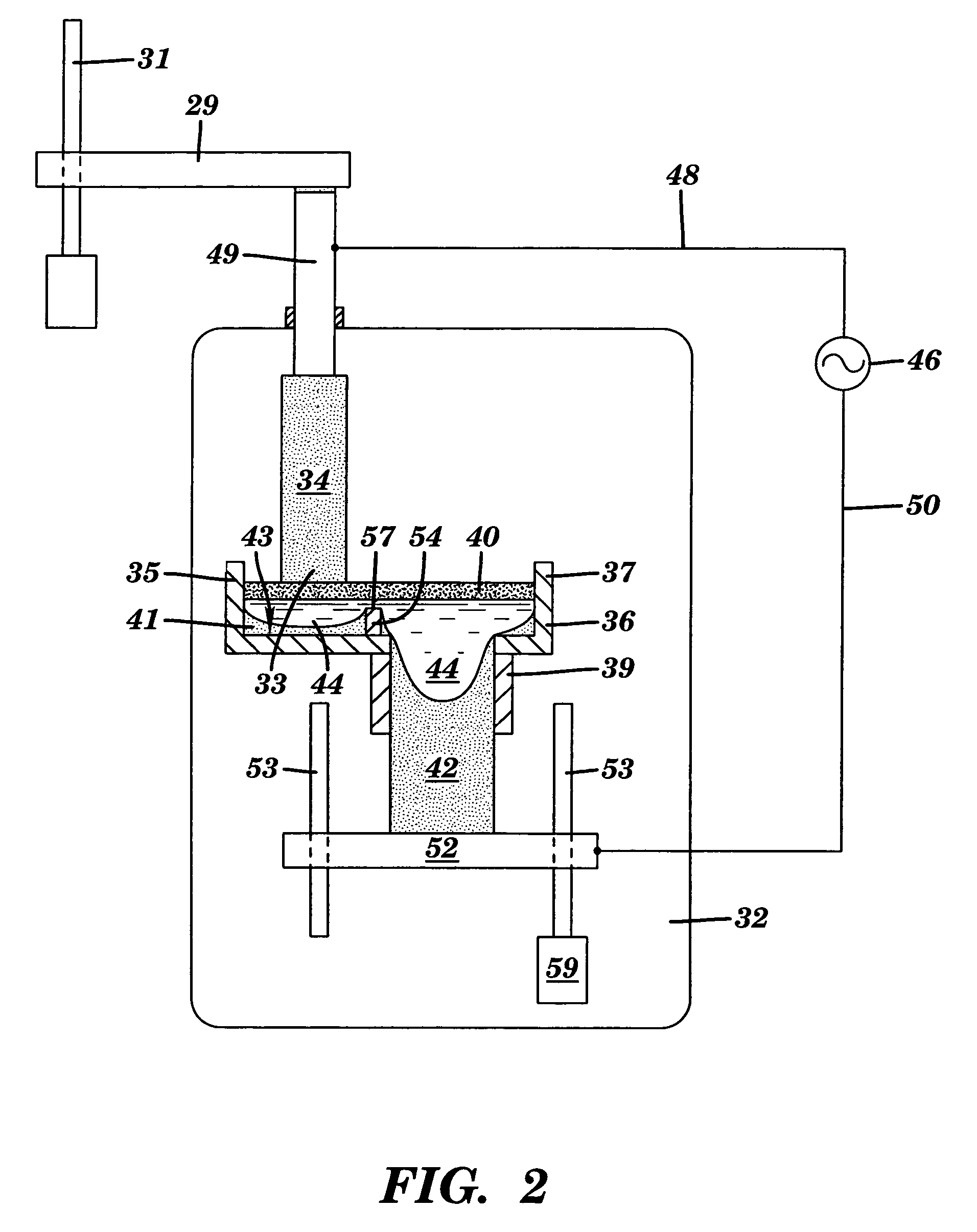Apparatus for the production or refining of metals, and related processes
a technology for refining apparatus and metals, applied in metal-working apparatus, blast furnace details, blast furnaces, etc., can solve the problems of requiring a very high energy expenditure, and processing through several steps can be expensive and time-consuming, so as to prevent the passage
- Summary
- Abstract
- Description
- Claims
- Application Information
AI Technical Summary
Benefits of technology
Problems solved by technology
Method used
Image
Examples
Embodiment Construction
[0046]FIG. 1 is a schematic representation of a portion of a conventional electroslag melting system 2. The system includes a consumable electrode 4 of the metal or alloy to be melted; along with an ingot mold 6 (usually a water-cooled reservoir). The system also includes an electrode support column 8. Ingot mold 6 contains a layer of liquid slag 10, into which the lower end of electrode 4 dips. Electrode 4 can be advanced toward and into contact with slag 10 by any mechanical means (not specifically shown). The rate of advancement usually corresponds to the rate at which the contacting surface of the electrode is melted as refining proceeds. The electroslag melting system can be generally contained within an inert atmosphere (e.g., argon), to control melt conditions.
[0047]The slag is heated by an electric current supplied by a power source 3 and associated circuit 5, which includes electrode 4. Heating of the slag causes the lower end of electrode 4 to melt, forming the pool of liq...
PUM
| Property | Measurement | Unit |
|---|---|---|
| temperature | aaaaa | aaaaa |
| depth | aaaaa | aaaaa |
| thickness | aaaaa | aaaaa |
Abstract
Description
Claims
Application Information
 Login to View More
Login to View More - R&D
- Intellectual Property
- Life Sciences
- Materials
- Tech Scout
- Unparalleled Data Quality
- Higher Quality Content
- 60% Fewer Hallucinations
Browse by: Latest US Patents, China's latest patents, Technical Efficacy Thesaurus, Application Domain, Technology Topic, Popular Technical Reports.
© 2025 PatSnap. All rights reserved.Legal|Privacy policy|Modern Slavery Act Transparency Statement|Sitemap|About US| Contact US: help@patsnap.com



